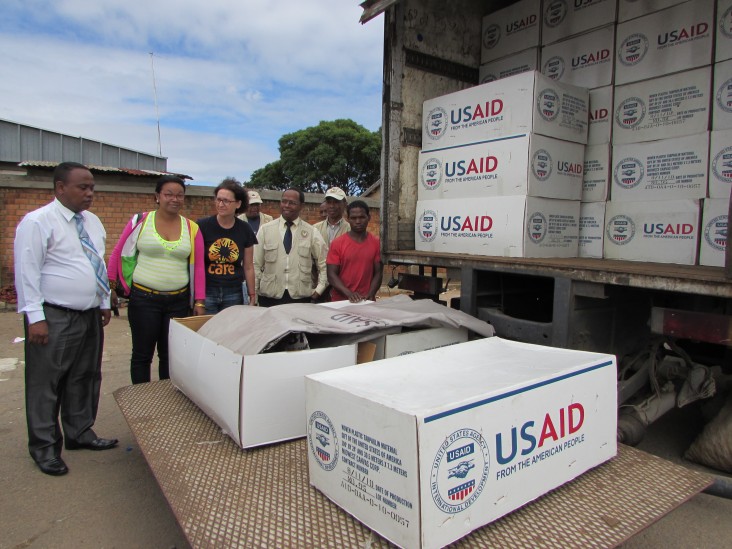- What We Do
- Agriculture and Food Security
- Democracy, Human Rights and Governance
- Economic Growth and Trade
- Education
- Environment and Global Climate Change
- Gender Equality and Women's Empowerment
- Global Health
- Humanitarian Assistance
- Transformation at USAID
- Water and Sanitation
- Working in Crises and Conflict
- U.S. Global Development Lab
Speeches Shim

Latest Fact Sheet
2020_09_30 USG Southern Africa Fact Sheet #3 ![]() (pdf - 432k)
(pdf - 432k)
view text version [pdf, 191kb]
2020_09_30 USG Southern Africa Program Map ![]() (pdf - 2 MB)
(pdf - 2 MB)
Key Developments
In southern Madagascar, approximately 1.6 million people were experiencing food insecurity by the end of July. Of these, more than 554,000 people in southern Madagascar’s Androy, Anosy, and Atsimo-Andrefana regions faced Crisis or worse levels of acute food insecurity between April and July due to below-average rainfall, reduced harvests, and price increases for staple foods.
Overall, below-average rainfall and reduced harvests beginning in November 2019 has caused food security conditions to deteriorate in Madagascar’s southernmost regions throughout 2020. In addition, IPC analyses anticipate that acute food insecurity in Madagascar’s Antananarivo, Fianarantsoa, and Toamasina cities will remain at Stressed—IPC 2—levels through January 2021.
COVID-19-related restrictions on movement and commerce have led to diminished domestic agricultural output and higher staple food prices, resulting in heightened food insecurity in urban areas of Madagascar, where poor households primarily rely on markets to access food.
USAID is also responding to disasters in neighboring Southern Africa countries.
Background
Madagascar experiences a variety of natural hazards, including tropical cyclones, drought, flooding, and recurrent locust infestations. USAID’s response strategy in Madagascar focuses on addressing urgent humanitarian needs while investing in disaster risk reduction programs that strengthen the ability of communities to prepare for and mitigate the effects of disasters. Activities have included supporting conservation agriculture, locust control efforts, and helping flood-affected communities adapt to decrease their vulnerability to flooding.

Comment
Make a general inquiry or suggest an improvement.